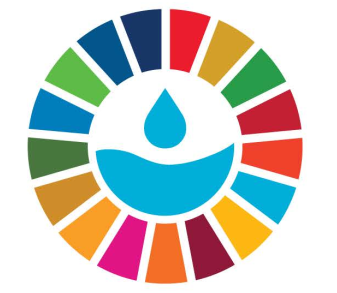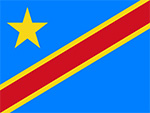AGIR POUR L'ACCES A L'EAU EN ZONE DE CONFLIT
MOUVEMENT DES JEUNES POUR LA PROTECTION DE L'ENVIRONNEMENT
(
Non-governmental organization (NGO)
)
#SDGAction49704
Description
Contexte générale et justification du projet La République Démocratique du Congo est un pays de l’Afrique centrale. Sa capitale est Kinshasa.Goma est le chef lieu de La province du Nord Kivu. La région des grands lacs est une zone sensible, dangereuse et en conflit. Bien que la RD. Congo dispose d’une grande réserve d’eau douce, la desserte nationale en eau potable est de « 30%(services d’ hydrauliques). Pourtant, l’article 48 de la Constitution de la RDCgaranti le droit d’accès à l’eau à tous et qui s’inspire à l’ODD6. La population des quartiers Kalongo, Rwangoma et Mupanda n’a pas accès à l’eau potable. La ville de BENIest confrontée à des pénuries et crises d’eau potable.La Régideso ne peut couvrir tous les besoins locaux en eau potable à cause de la vétusté des infrastructures, le manquede planification et investissement, la mauvaise gestion des mandataires de l’Etat, ingérence de pouvoir politique dans la gestion des entreprises publique. Les 60% des maladies hydriquesdans la ville BENIsont d’origine de la mauvaise qualité de l’eau.Les études degéohydrologiques et géophysiques sont nécessaire pour la concrétisation du projet.C’est dans ce contexte des crises multiformes répétitives d’instabilité et de guerre que sera mise en œuvre le projet : « MAJI USAFI NA AMANI BENI » distribution d’eau potable dans une zone en conflit à l’Est de la RDC d’ ici 3 ans, cela n’empêche la réalisation et la concrétisation du projet dans la région de BENI.
1. 180 ménages soit 1440 personnes de la population de Kalongo, Rwangoma et Mupanda parmi la population de la ville sont atteints. 2. 50% de la population bénéficiaire déclarent satisfait du prix 50 FC par bidon de 25 Litres. 3. Diminution de 50% des maladies hydriques : diarrhée, cholera et typhoïde… au sein de la population bénéficiaire de Kalongo, Rwangoma et Mupanda. 4. 100personnes (asperseurs, bénéficiaires directs, leaders locaux et jeunes) seront renforcées en gestion et gouvernance du projet et de la gestion du temps. 5. 75 % soit 800 personnes (parties prenantes locales) des publics cibles sont sensibilisées et impliqués dans la formation et les actions de mobilisation communautaire, de pacification, de prévention, résolution de conflit et de consolidation de la paix. jeunes 70% chargés de la corvée de la recherche d’eau de mauvaise qualité pour les ménages. Ils s’approvisionnent dans des rivières éloignées mal entretenu dans une zone en conflit. Cela avec tous risques dans une région où l’insécurité est quasi permanente, les maladies hydriques et lecycle infernal de différentes épidémies (EBOLA et COVID19) dans la région. Les quartiers Kalongo, Rwangoma et Mupanda accueillent des déplacés internes paysans fouillant les tueries dans les zone rurales d’où l’expansion démographiquegalopante dans la ville de BENI. Le projet sera localisé dans ces quartiers Kalongo, Rwangoma et Mupanda dans la commune de Mbau les potentialités présentes dans la zone, Le sol est un atout pour faire un forage pour l’adduction de l’eau.
Les organisations de la société civile particulièrement le réseau des ONG membre du Collectif de Développement Intégré au Congo de BENI, les leaders locaux, les autorités locales, jouera rôle important de l’orientation et gestion du projet. Les leaders locaux et les églises sont écoutées au niveau de la base par la population pour convaincre les déplacés du bien fait et de la sécurisation du projet et des personnes dans les quartiers. Les autorités locales leurs implication dans la délivrance des autorisations administratives du gouvernorat, de la mairie pour le fonctionnement et réalisation du projet dans leurs entités administratives respectives face aux contraintes de l’Etat de siège et à la multiplicité de services de sécurité dans la ville de BENI. Les bénéficiaires sont les personnes vulnérables habitant la ville de BENI, les réfugiés de guerres, les blessés de guerres , hommes et femmes.
SDGS & Targets
Goal 3
Ensure healthy lives and promote well-being for all at all ages
3.1
3.1.1
Maternal mortality ratio
3.1.2
Proportion of births attended by skilled health personnel
3.2
3.2.1
Under-five mortality rate
3.2.2
Neonatal mortality rate
3.3
By 2030, end the epidemics of AIDS, tuberculosis, malaria and neglected tropical diseases and combat hepatitis, water-borne diseases and other communicable diseases
3.3.1
Number of new HIV infections per 1,000 uninfected population, by sex, age and key populations
3.3.2
Tuberculosis incidence per 100,000 population
3.3.3
Malaria incidence per 1,000 population
3.3.4
Hepatitis B incidence per 100,000 population
3.3.5
Number of people requiring interventions against neglected tropical diseases
3.4
3.4.1
Mortality rate attributed to cardiovascular disease, cancer, diabetes or chronic respiratory disease
3.4.2
Suicide mortality rate
3.5
Strengthen the prevention and treatment of substance abuse, including narcotic drug abuse and harmful use of alcohol
3.5.1
Coverage of treatment interventions (pharmacological, psychosocial and rehabilitation and aftercare services) for substance use disorders
3.5.2
Alcohol per capita consumption (aged 15 years and older) within a calendar year in litres of pure alcohol
3.6
3.6.1
Death rate due to road traffic injuries
3.7
By 2030, ensure universal access to sexual and reproductive health-care services, including for family planning, information and education, and the integration of reproductive health into national strategies and programmes
3.7.1
Proportion of women of reproductive age (aged 15-49 years) who have their need for family planning satisfied with modern methods
3.7.2
Adolescent birth rate (aged 10-14 years; aged 15-19 years) per 1,000 women in that age group
3.8
Achieve universal health coverage, including financial risk protection, access to quality essential health-care services and access to safe, effective, quality and affordable essential medicines and vaccines for all
3.8.1
Coverage of essential health services
3.8.2
Proportion of population with large household expenditures on health as a share of total household expenditure or income
3.9
3.9.1
Mortality rate attributed to household and ambient air pollution
3.9.2
Mortality rate attributed to unsafe water, unsafe sanitation and lack of hygiene (exposure to unsafe Water, Sanitation and Hygiene for All (WASH) services)
3.9.3
Mortality rate attributed to unintentional poisoning
3.a
3.a.1
Age-standardized prevalence of current tobacco use among persons aged 15 years and older
3.b
Support the research and development of vaccines and medicines for the communicable and non-communicable diseases that primarily affect developing countries, provide access to affordable essential medicines and vaccines, in accordance with the Doha Declaration on the TRIPS Agreement and Public Health, which affirms the right of developing countries to use to the full the provisions in the Agreement on Trade-Related Aspects of Intellectual Property Rights regarding flexibilities to protect public health, and, in particular, provide access to medicines for all
3.b.1
Proportion of the target population covered by all vaccines included in their national programme
3.b.2
3.b.3
Proportion of health facilities that have a core set of relevant essential medicines available and affordable on a sustainable basis
3.c
3.c.1
Health worker density and distribution
3.d
Strengthen the capacity of all countries, in particular developing countries, for early warning, risk reduction and management of national and global health risks
3.d.1
International Health Regulations (IHR) capacity and health emergency preparedness
3.d.2
Percentage of bloodstream infections due to selected antimicrobial-resistant organisms
Goal 6
Ensure availability and sustainable management of water and sanitation for all
6.1
By 2030, achieve universal and equitable access to safe and affordable drinking water for all
6.1.1
Proportion of population using safely managed drinking water services
6.2
By 2030, achieve access to adequate and equitable sanitation and hygiene for all and end open defecation, paying special attention to the needs of women and girls and those in vulnerable situations
6.2.1
Proportion of population using (a) safely managed sanitation services and (b) a hand-washing facility with soap and water
6.3
By 2030, improve water quality by reducing pollution, eliminating dumping and minimizing release of hazardous chemicals and materials, halving the proportion of untreated wastewater and substantially increasing recycling and safe reuse globally
6.3.1
Proportion of domestic and industrial wastewater flows safely treated
6.3.2
Proportion of bodies of water with good ambient water quality
6.4
6.4.1
Change in water-use efficiency over time
6.4.2
Level of water stress: freshwater withdrawal as a proportion of available freshwater resources
6.5
By 2030, implement integrated water resources management at all levels, including through transboundary cooperation as appropriate
6.5.1
Degree of integrated water resources management
6.5.2
Proportion of transboundary basin area with an operational arrangement for water cooperation
6.6
6.6.1
Change in the extent of water-related ecosystems over time
6.a
6.a.1
Amount of water- and sanitation-related official development assistance that is part of a government-coordinated spending plan
6.b
Support and strengthen the participation of local communities in improving water and sanitation management
6.b.1
Proportion of local administrative units with established and operational policies and procedures for participation of local communities in water and sanitation management
SDG 14 targets covered
| Name | Description |
|---|
Deliverables & Timeline
Implémentation du forage
Resources mobilized
Partnership Progress
Feedback
Action Network

Timeline
Entity
Region
- Africa
Other beneficiaries
les habitants des villes approximatives de BENI
More information
Countries

Contact Information
MIKE, CHARGE D'ACTIVITES

